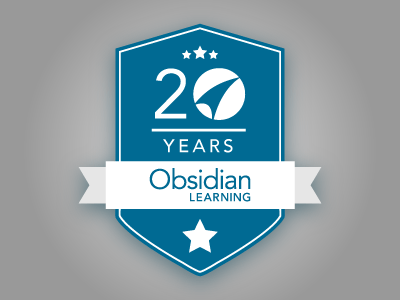I have been fascinated by the concept of serendipitous learning from the moment I first heard it. First of all, I love the word “serendipitous” and its meaning. I am not a very spontaneous person, and I like structure, so the thought of “fortunate happenstance” is beautiful to me.
As a scientist, during the research for my chemistry thesis, I valued serendipity and learned to “encourage” it by making myself think of random approaches and applications for the polymers I was making. The New Oxford Dictionary of English defines serendipity as the occurrence and development of events by chance in a satisfactory or beneficial way, understanding the chance as any event that takes place in the absence of any obvious project (randomly or accidentally), which is not relevant to any present need, or in which the cause is unknown.
In our job of learning design, we make sure to analyze audiences, desired outcomes, delivery platforms, and development tools. Our job is to create structure, influence measurable behaviors, and fulfill competency gaps. Serendipity is not something we grab, or embrace, in our day to day activities.
So, it’s no wonder that combining “serendipity” and “learning” in the context of our developing of learning programs, made me pause and smile…
Since then, I have been looking for ways to incorporate the concept of learning through unexpected means, learning without consciously realizing it as a result of doing other things, in structured learning programs. Does it defeat the purpose of serendipity? Maybe, but I think we can still preserve the feeling of lightness and pleasant surprise.
Examples of Serendipitous Learning
The typical example that comes up when looking for the use of serendipitous learning is gaming. The ideal use of gaming in learning is to increase learner engagement, to immerse them so fully in learning that they experience what Mihaly Csikszentmihalyi (2008)1 calls “optimal experience” or “flow.” When a learning game leads to a state of “flow,” learners can be so engaged they might not know they’re being “taught.”
I personally think that the best example of serendipitous learning is Re:activism. Re:activism is one of the projects developed by PETlab, a collaboration between Games for Change and Parsons The New School for Design devoted to interactive game design and research.
Learning in Re:activism is gained through authentic experience, not so much from actual information. The game is played in public places, in a dynamic environment that lends to creating strong experiences with lasting impressions. The real world transforms into the game world, and the game world becomes part of the real world. Players who have participated in this game talk about the game becoming reality, which in turn, motivates them to learn more about the tasks they are doing.
We can always incorporate a game into a learning program, either online or in the classroom. I now believe, though, that designing for chance and openness – and allowing participants to interact with the public in some way – are crucial paths to a successful learning game. For example, instead of writing a script for a role play activity, create a background package with summaries and talking points. Using these materials to encourage conversations that may not happen informally can create an opportunity for serendipitous learning. Using a combination of unstructured interactions, the participants can actually take ownership of their learning experience.
Of course, this more “random,” seemingly inconsistent approach to learning can frustrate some, and augmenting these experiences with deeper informational nuggets is necessary in order to create a measurable outcome. Embedding a “serendipitous learning” experience into an existing learning program can also work by enhancing information retention, and it can be an easy win for organizations looking at redesigning their training.
What do you think of serendipitous learning? Have you encountered any examples in the context of structured learning?
-
Csikszentmihalyi, M. (2008). Flow: The psychology of optimal experience. New York: HarperCollins. ↩







